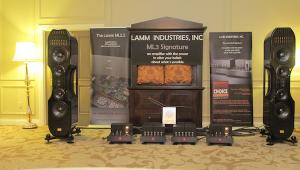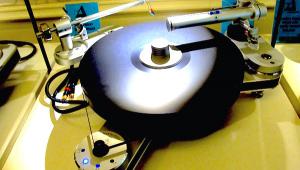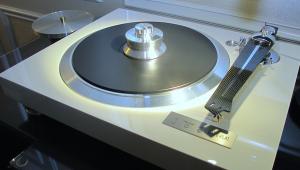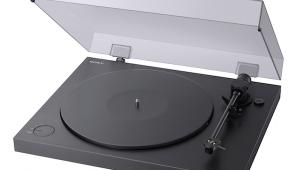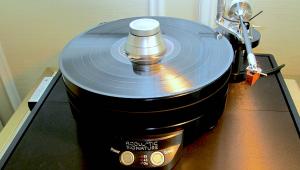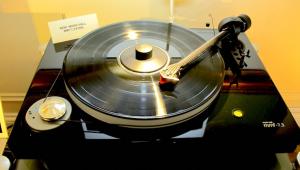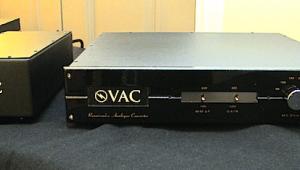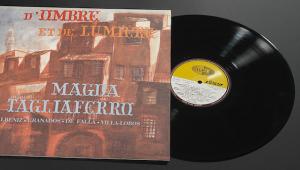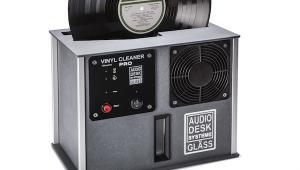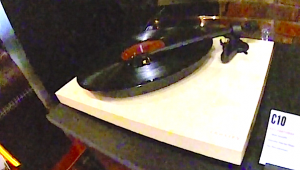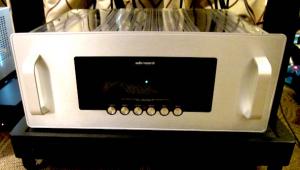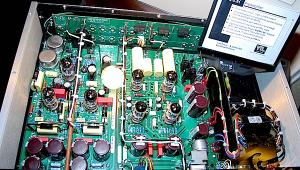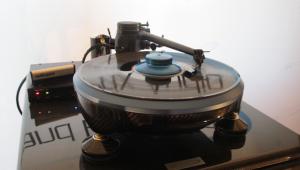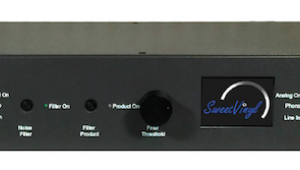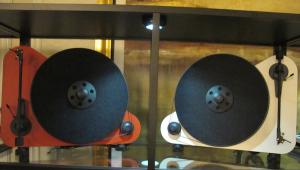The Well Tempered Royale 400 Is For Those Who Like It Long
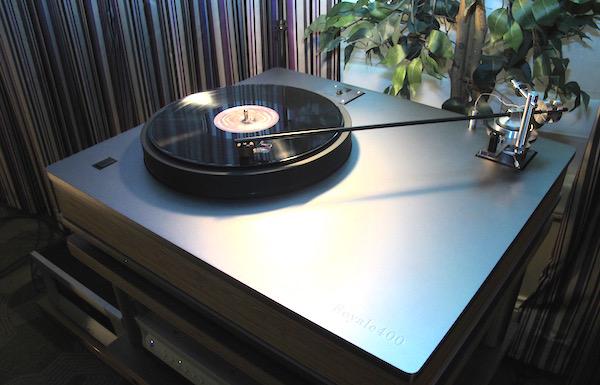
In the Devore Audio room I found Well Tempered's new $12,500 Royale 400 turntable complete with sixteen inch long tone arm.
The Bill Firebaugh designed 'table features an approximately twenty five inch by twenty one inch plinth of baltic plywood sandwiched by two thick aluminum plates. The 'table and arm combo weighs in at around a hundred pounds.
A proprietary rubber damping material is between the plinth layers as well as between the motor and tone arm mounting plate. An electronic servo system controls the motor. As always the tone arm bearing utilizes a golf ball suspended in silicone fluid, which on this model is well-hidden.
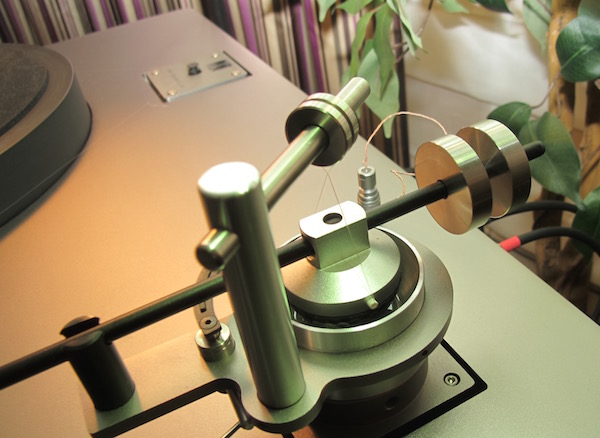
| Equipment Reviews | The Gruvy Awards | Blogs Analog Tips | Columns Music | Show Reports | News Resources |
 © 2025 AnalogPlanet
© 2025 AnalogPlanetAVTech Media Americas Inc.
All rights reserved
